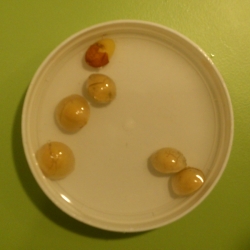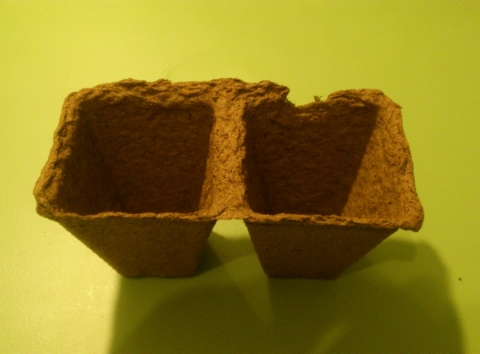As I wrote yesterday, I used coffee dregs in a mixture with soil for my pine seeds. I’ve read a bit about recycling coffee dregs and coffee grounds and there are an amazing number of things you can do with that “aromatic waste”.
Using Coffee Grounds and Coffee Dregs As A Fertilizer
First of all, you can use it as a fertilizer. Apparently, it will mainly effect the leaves and help them grow. Unfortunately, I cannot find the source any longer.
You can also use coffee as an organic pest control. Even in Parks and Recreations, they featured coffee as a slug-repellent! I read that it also works for (or rather against) moles … and cats. But who would want to repel cats?! I had some tiny insects in some of my pots which had come with the soil. I added some ground coffee on top of the soil. They’re not dead yet, but I’m hopeful. And it smelled sooo nice when I watered the plants!
Recycling Coffee Dregs Into Pots
During my research, I came across that company that recycles coffee dregs into plant pots. Just google it, I don’t want to help them with their SEO to much. That sounds like a beautiful idea for bonsai pots! You only need some casts, but I have plenty of LEGO to work with.
I guess, one would make a silicone mold first and pour a mixture of coffee and resin into it, like this guy (picture by him) did.
Then I came across a related matter: Animal coffins made of recycled coffee and other organic material. I guess one could use that material for bio-degradable pots. I found some “recipes” for organic glue, which in combination with coffee grounds and other stuff could be used. I’ve used up all my coffee dregs already, so I cannot try today. But there is plenty of supply at the office!
Using Coffee for Dyeing
Then, you can use coffee for dyeing fibers and other things like eggs for Easter. Somewhere I read that someone used it as a henna substitute for making tattoos. I won’t go into more detail, because this is not my area of expertise – not that the above areas were….
You can also use it as a peeling for cleaning your skin. And for odor control…





















